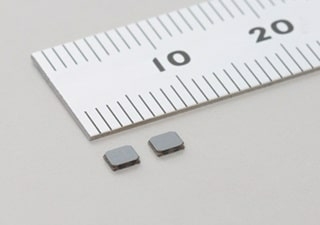source: Murata news
Murata Manufacturing Co., Ltd. introduces a 1008-inch (2.5 x 2.0 mm) winding power inductor for wearable devices that achieves a large L (22 uH) in spite of its low 0.6 mm profile.
There is an increasing demand for compact, low-profile power inductors in electronic devices such as wearable devices and smart cards. Because liquid crystal panels are mounted on these devices, inductors that have both a low profile as well as a high L value are needed for the panel drivers. Yet, in the conventional monolithic type low-profile high-power inductors LQM_CH series, the L value was limited to 2.5 uH.
This is why Murata has released the 1008-inch (2.5 x 2.0 mm) winding inductors LQH2HPN_DR series intended for wearable devices. It is available in a variety of L values up to 22 uH, in spite of its low profile.
Features
- Low profile ideal for wearable devices (max. 0.6 mm)
- Wide inductance lineup (0.47 H to 22 uH)
Applications
- Power inductors for compact electronic devices such as wearable devices
Parts List
LQH2HPN_DR series
Production
Mass Production
































